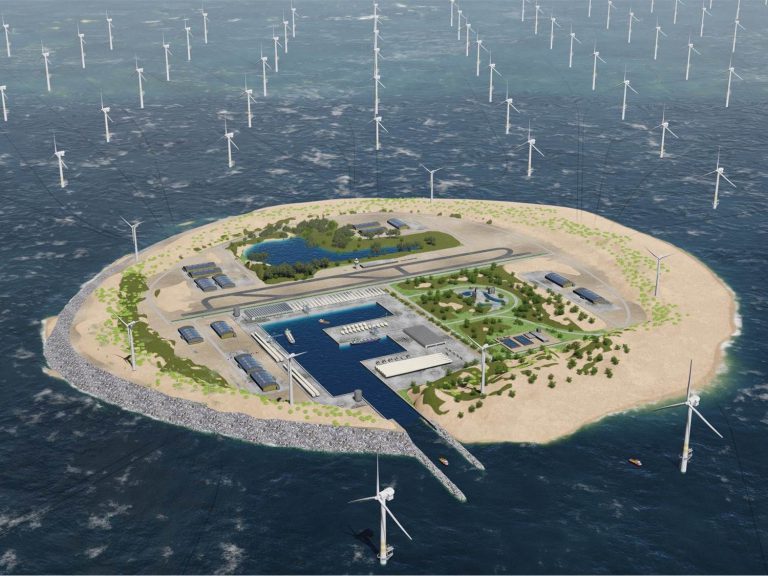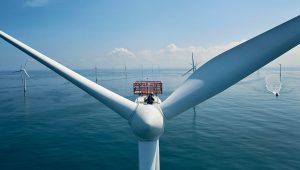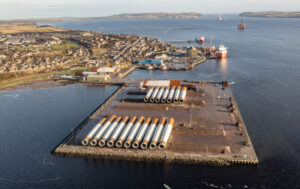Port of Rotterdam Enters North Sea Wind Power Hub Consortium
The Port of Rotterdam has joined the North Sea Wind Power Hub Consortium, which has thus far comprised TenneT TSO B.V. and Gasunie from the Netherlands, Energinet from Denmark, and TenneT TSO GmbH from Germany.

The consortium is established for the purpose of examining the potential for a large-scale sustainable European energy system in the North Sea.
The partners consider their collaboration as important for the development of a North Sea Wind Power Hub from 2030 onward, which will make a major contribution towards achieving the objectives of the Paris climate change agreement. They believe EU’s climate change objectives will require a significant development of offshore wind energy capacity in the North Sea, with the deployment estimates ranging from 70GW to 150GW of offshore wind in the North Sea in 2040. A specific scenario conducted by the consortium which is based on the COP21 Paris Agreement commitment estimates 180GW offshore wind capacity by 2045 in the North Sea.
Allard Castelein, CEO at Port of Rotterdam, said: “We are experienced in seaward land reclamation, and we are happy to contribute this expertise to the consortium. We really need to speed up efforts to develop large-scale offshore wind energy capacity, and ensure this capacity is effectively integrated into the relevant plans of the North Sea countries.”
Based on the calculations commissioned by the Port of Rotterdam, enabling the sustainable operation of Rotterdam’s industry alone would require between 27 and 49TWh of generation capacity, and volumes in that order of magnitude can only be achieved by offshore wind energy.
Assuming 4,000 operating hours per year for offshore wind turbines, 27 to 49TWh would require between 7 and 12GW of installed capacity. To date, 1GW of wind power capacity has been installed in the Dutch sector of the North Sea. Taking into account the offshore wind farm zones currently designated and earmarked Borssele, at the Holland Coast, by 2023 this capacity will have been expanded by 3.5GW. In other words, current plans fall far short of the requirement of Rotterdam’s industry, the port said.
The Vision
The consortium’s vision starts from the development with bi-national hybrid connections and builds towards an accelerated roll-out facilitated by large scale (10-30 GW) offshore wind collection hubs feeding and connecting multiple North Sea countries. Central to this vision is the construction of one or more Power Link Islands, i.e. hubs with interconnections to the countries bordering the North Sea. These artificial islands/hubs will need to be situated in the North Sea, at a site offering ideal wind conditions. For far-offshore wind farm sites, a coordinated international approach with an island-based solution will be 30% more cost-effective than the connection model with HVDC converter platforms on individual jackets, the consortium partners said.
Power Link Island
A Power Link Island will be able to accommodate a large number of links to wind turbines and/or offshore wind farms, and facilitate the distribution and transmission of wind-generated electricity via direct-current connections to the North Sea countries, including the Netherlands, Belgium, the United Kingdom, Norway, Germany and Denmark. These WindConnectors will not only transmit wind power from the wind farms to the island, but will simultaneously serve as interconnectors between the countries’ energy markets, enabling them to trade electricity across their borders.
On a Power Link Island, wind power can also be converted to sustainable hydrogen for large-scale transport to shore or for storage or buffering purposes. Hydrogen is currently produced from natural gas with CO2 as a by-product. Combining the strengths of electricity and gas supply systems may also provide a boost to the use of hydrogen as a sustainable solution in numerous applications in industry, transportation, and the built environment, the consortium said.
Power-to-gas conversion is expected to play an important part in the further analyses of the North Sea Wind Power Hub system. It could enable wind-generated energy to be converted into gaseous form close to its sources, i.e. far offshore, and then brought ashore possibly using the existing offshore gas infrastructure.









